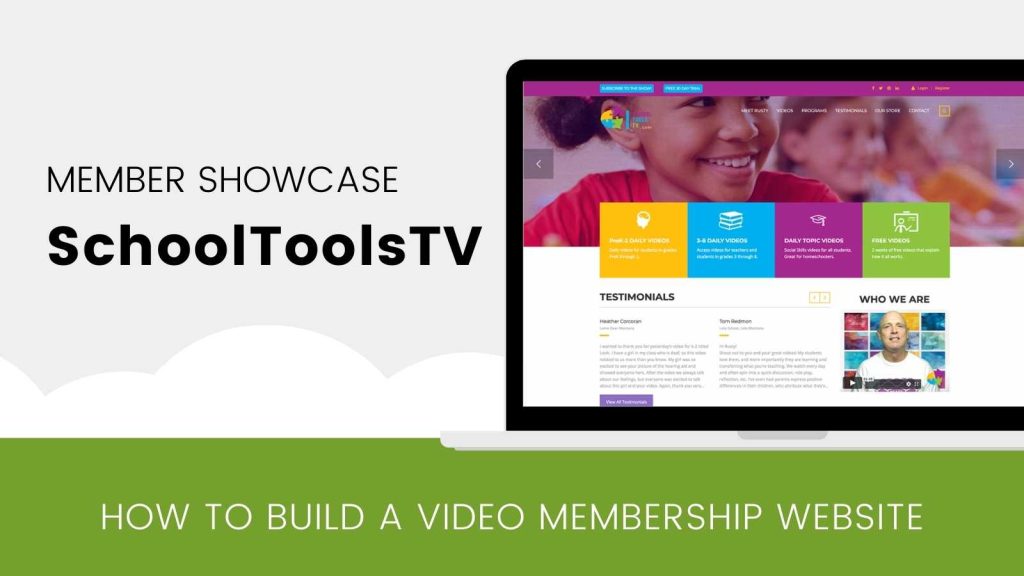Creating a membership portal for your school website can significantly enhance communication, engagement, and resource sharing among students, parents, and faculty. A well-designed portal provides a centralized hub for information, fostering a sense of community and belonging within your school. Here’s a step-by-step guide on how to build an effective membership portal for your school website.

Table of Contents
Toggle1. Define Your Objectives
Before diving into the technical aspects, it’s essential to clarify the purpose of your membership portal. What do you want to achieve with it? Common objectives include:
- Providing access to educational resources.
- Facilitating communication between teachers and parents.
- Offering a platform for event registration and information sharing.
- Creating a community space for discussions and support.
Defining clear objectives will guide your design and feature selection.
2. Choose the Right Platform
Selecting the right content management system (CMS) is crucial for building a functional membership portal. Popular platforms like WordPress, Joomla, and Drupal offer various plugins and tools that can support membership functionalities.
Considerations:
- Ease of Use: Choose a platform that is user-friendly for both administrators and users.
- Scalability: Ensure the platform can grow with your school’s needs.
- Integration Capabilities: Look for platforms that can integrate with existing school systems, such as student information systems (SIS).
3. Select Membership Management Software
Once you have your CMS in place, you’ll need membership management software that allows you to create and manage user accounts effectively.
Key Features to Look For:
- User Registration and Profiles: Allow users to create and manage their profiles.
- Access Control: Set permissions for different user roles (e.g., students, parents, teachers) to ensure appropriate access to resources.
- Payment Processing: If applicable, include features for managing membership fees.
4. Design an Intuitive User Interface
The design of your membership portal should be user-friendly and visually appealing. An intuitive interface encourages engagement and makes it easy for users to find what they need.
Design Tips:
- Clear Navigation: Use a simple and logical menu structure to help users locate resources easily.
- Responsive Design: Ensure the portal is mobile-friendly, as many users may access it from their smartphones.
- Consistent Branding: Incorporate your school’s colors, logo, and branding elements to create a cohesive look.
5. Create User Registration and Login Features
Implementing a straightforward user registration and login process is vital for user access.
Key Elements:
- Easy Registration: Simplify the registration process with minimal required fields. Consider allowing registration through social media or email.
- Secure Login: Implement security measures such as two-factor authentication to protect user accounts.
- Forgot Password Option: Include a password recovery option to assist users who may forget their login credentials.
6. Develop Resource Sections
A core component of your membership portal will be the resource sections, where users can access valuable information and tools.
Resource Ideas:
- Educational Materials: Provide access to digital textbooks, worksheets, and study guides.
- Event Calendars: Include a calendar for school events, meetings, and important dates.
- Discussion Forums: Create spaces for students and parents to ask questions, share experiences, and connect.
7. Integrate Communication Tools
Facilitating communication within your membership portal can enhance engagement and collaboration among users.
Communication Features:
- Messaging System: Allow users to send private messages to each other or to faculty members.
- Announcements: Create a section for important announcements, news updates, and alerts.
- Newsletters: Offer an option for users to subscribe to newsletters that provide regular updates about school activities.
8. Implement a Support System
Offering support within the portal is crucial for user satisfaction. Consider including a support system for inquiries and troubleshooting.
Support Options:
- Help Center: Create a dedicated section with FAQs, guides, and troubleshooting tips.
- Contact Forms: Allow users to submit questions or issues directly through the portal.
- Live Chat: If possible, integrate a live chat feature for real-time assistance.
9. Ensure Data Security and Privacy
With sensitive information being shared, ensuring data security and privacy is paramount.
Security Measures:
- Encryption: Use SSL certificates to encrypt data transmission.
- Regular Backups: Implement regular backups to protect against data loss.
- Compliance: Ensure compliance with data protection regulations (such as FERPA) to safeguard student information.
10. Gather Feedback and Improve
Once your membership portal is live, gathering feedback from users is crucial for continuous improvement.
Feedback Methods:
- Surveys: Send out surveys to gather insights on user experiences and suggestions for improvement.
- User Testing: Conduct user testing sessions to identify usability issues.
- Regular Updates: Continuously improve the portal based on feedback, keeping it relevant and user-friendly.
Conclusion
Building a membership portal for your school website can enhance communication, resource sharing, and community engagement. By following these steps, you can create a user-friendly and effective portal that meets the needs of your students, parents, and faculty. As your portal evolves, remember to prioritize user feedback and make adjustments to ensure it remains a valuable resource for your school community.


No responses yet